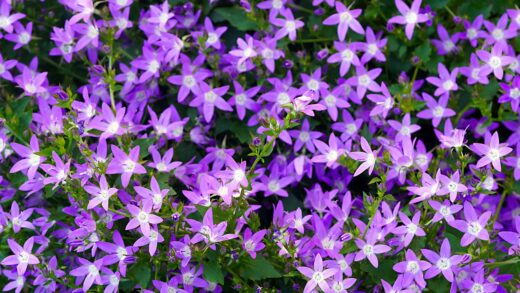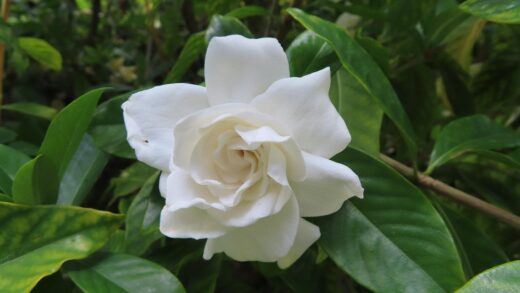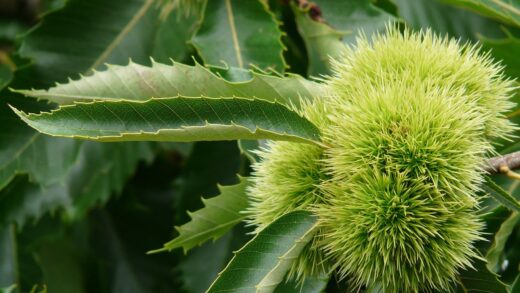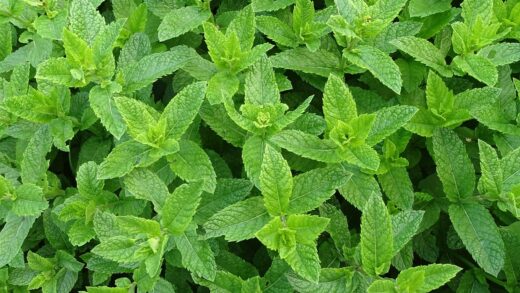Understanding the water requirements and establishing a proper irrigation routine for the everlasting pea is fundamental to cultivating a thriving, floriferous vine. While this perennial is renowned for its resilience and notable drought tolerance once established, its performance, vigor, and the quality of its floral display are significantly enhanced by appropriate watering practices. Providing adequate moisture, especially during key stages of its growth cycle, ensures the plant can build a robust root system and support the lush foliage and abundant blooms it is prized for. Striking the right balance between sufficient hydration and the prevention of waterlogged conditions is the essence of mastering its care.
In its initial stages of life, the everlasting pea has a critical need for consistent moisture. During the first growing season after planting, whether it was started from seed, a nursery pot, or as a new division, the plant is focused on developing an extensive root system. This foundational network of roots is what will sustain the plant in subsequent years and give it its characteristic drought resistance. To support this crucial development, a regular watering schedule is essential. The soil should be kept evenly moist, but not saturated, which typically translates to a deep watering once or twice a week, depending on rainfall and temperature.
The method of irrigation can have a significant impact on the plant’s health. It is always best to water the everlasting pea at the base of the plant, delivering water directly to the root zone where it is needed most. Using a soaker hose or a watering can with a long spout allows you to saturate the soil without wetting the foliage. This practice is particularly important because it helps to prevent the development and spread of fungal diseases like powdery mildew, which thrives in damp, humid conditions created by wet leaves, especially when airflow is limited.
The time of day you choose to water is also a relevant factor. The most efficient and beneficial time to irrigate is in the early morning. Watering at this time minimizes water loss through evaporation, as temperatures are cooler, allowing the water to penetrate deeply into the soil. It also ensures that any moisture that does splash onto the leaves has the entire day to dry in the sun, further reducing the risk of fungal issues. Watering in the evening is a less ideal alternative, as the foliage may remain damp overnight, creating a more favorable environment for disease.
Observing the plant and the surrounding soil is the most reliable way to determine when to water. Instead of adhering to a rigid schedule, it is better to check the soil’s moisture level. A simple and effective method is to insert your finger about two inches into the soil near the base of the plant. If the soil feels dry at that depth, it is a clear indication that it is time to provide a thorough watering. The leaves of the plant can also offer clues; if they appear slightly wilted or dull in color during the heat of the day but recover in the evening, the plant is likely thirsty.
More articles on this topic
Water needs of established plants
Once an everlasting pea plant has survived its first year and is considered established, its water requirements change quite dramatically. The deep and extensive root system it developed during its first season makes it remarkably self-sufficient and drought-tolerant. In regions with regular summer rainfall, established plants may require little to no supplemental irrigation at all, thriving on natural precipitation alone. This hardiness is one of the key attributes that makes it such a low-maintenance and popular choice for many gardeners.
Even with its inherent drought tolerance, the performance of an established plant can be greatly improved with occasional watering during specific periods. The most critical time to consider supplemental irrigation is during the flowering period. Producing a profusion of blooms requires a significant amount of energy and water from the plant. During prolonged hot and dry spells in the summer, providing a deep soaking every few weeks will help the plant continue to flower prolifically and maintain its lush, green foliage, preventing premature dormancy.
It is important to understand the difference between survival and optimal performance. While an established everlasting pea will likely survive a severe drought, its appearance will suffer. The plant may stop flowering, the lower leaves might turn yellow and drop off, and the overall growth may become stunted as it enters a state of conservation. By providing occasional deep watering during these stressful periods, you are not just ensuring its survival, but encouraging it to continue looking its best and providing the beautiful display it was planted for.
When watering established plants, the principle of deep but infrequent irrigation is far more effective than shallow, frequent watering. A deep soaking encourages the roots to continue to grow deeper into the soil in search of moisture, which further enhances the plant’s resilience to drought. Shallow watering, on the other hand, encourages roots to stay near the surface, making the plant more dependent on supplemental irrigation and more vulnerable during dry periods. Aim to saturate the top six to eight inches of the soil with each watering.
More articles on this topic
The impact of soil type
The type of soil in your garden plays a pivotal role in determining the watering frequency for the everlasting pea. Different soil textures have vastly different water-holding capacities, which directly impacts how often the plant will need irrigation. Understanding your specific soil composition is therefore essential for developing an effective and efficient watering strategy. This knowledge helps prevent both under-watering and the more dangerous issue of over-watering.
Sandy soils, which are characterized by large particles and large air spaces, drain very quickly. While this excellent drainage is beneficial in preventing root rot, it also means that water and nutrients are leached away rapidly. In a sandy soil environment, you will need to water the everlasting pea more frequently than in other soil types, especially during its establishment phase and during periods of drought. Amending sandy soil with plenty of organic matter, like compost, can significantly improve its water-holding capacity, reducing the need for frequent irrigation.
Conversely, heavy clay soils are composed of very fine particles that compact easily, leading to slow drainage. While clay soils are very effective at retaining moisture, they can easily become waterlogged, which is a major threat to the health of the everlasting pea. In clay soil, it is crucial to water less frequently and to ensure the planting area has been properly amended to improve its structure and drainage. Incorporating organic matter and potentially some coarse grit or sand before planting is vital to create a suitable environment and prevent the roots from suffocating.
The ideal soil for the everlasting pea is a loam, which represents a balanced mixture of sand, silt, and clay. Loam soils offer the best of both worlds: good moisture retention combined with adequate drainage. If you are fortunate enough to have loamy soil, you will find that it provides the most forgiving environment for watering. It holds enough moisture to sustain the plant between rainfall events but drains well enough to prevent the roots from sitting in water. Even in loam, amending with compost annually is a good practice to maintain its excellent structure and fertility.
Signs of over- and under-watering
Recognizing the signs of improper watering is a key skill for any gardener. Both over-watering and under-watering can cause stress to the everlasting pea, and while the symptoms can sometimes appear similar, there are subtle differences to look for. One of the most common signs of under-watering is wilting. The leaves and stems will droop and look limp, especially during the hottest part of the day. The foliage may also lose its vibrant color, appearing dull, and the lower leaves may turn yellow or brown and become crispy before dropping off the plant.
An under-watered plant will also exhibit stunted growth and poor flowering. If the plant is not receiving enough moisture, it will conserve its resources, leading to shorter stems, smaller leaves, and a significant reduction in the number of flower buds it produces. In severe cases of drought stress, the plant may cease flowering altogether and drop existing buds before they have a chance to open. A simple check of the soil moisture level will confirm if a lack of water is the cause of these symptoms.
Conversely, over-watering can be even more detrimental to the everlasting pea, as it leads to root rot, from which the plant may not recover. A primary symptom of over-watering is yellowing leaves, similar to under-watering. However, the leaves on an over-watered plant will often feel soft and limp rather than dry and crispy, and the yellowing may affect the entire plant, not just the lower leaves. The plant may also wilt, but the soil around it will be wet, which is a clear indicator that the issue is too much water, not too little.
In advanced cases of over-watering and root rot, the base of the stems may become soft, mushy, and discolored, and the entire plant may appear to be collapsing. There might also be a foul, sour smell emanating from the soil as the roots begin to decay. At this stage, the damage is often irreversible. Therefore, it is critical to address watering issues at the first sign of trouble and to always prioritize good drainage as the best preventative measure against the dangers of excessive moisture.
Mulching to conserve moisture
Applying a layer of organic mulch around the base of the everlasting pea is one of the most effective strategies for managing soil moisture and reducing the need for supplemental watering. Mulch acts as a protective blanket over the soil, slowing down the rate of evaporation by shielding it from the direct heat of the sun and the drying effects of the wind. This simple practice helps to keep the soil cooler and more evenly moist for longer periods, creating a more stable environment for the plant’s roots.
A wide variety of organic materials can be used as mulch, each offering its own benefits. Shredded bark, wood chips, straw, shredded leaves, or garden compost are all excellent choices. Apply a two- to three-inch layer of mulch over the root zone of the plant, being careful to leave a small gap right around the base of the stems. Piling mulch directly against the plant’s crown can trap too much moisture and lead to rot, so maintaining this small, mulch-free circle is an important detail.
Beyond its primary benefit of moisture conservation, mulching offers several other advantages for the health of the everlasting pea. As the organic mulch gradually decomposes over time, it enriches the soil with valuable nutrients and improves its structure, whether you have sandy or clay soil. Mulch also plays a crucial role in suppressing weed growth. By blocking sunlight from reaching the soil surface, it prevents many weed seeds from germinating, reducing competition for water and nutrients.
The best time to apply or replenish mulch is in the mid-spring, after the soil has warmed up but before the intense heat of summer arrives. Applying it when the soil is already moist, such as after a good rainfall, will help to lock that moisture in. A well-maintained layer of mulch significantly reduces the amount of time and effort spent on watering and weeding throughout the growing season, making it a cornerstone of efficient and effective garden maintenance for the everlasting pea and many other plants.


















